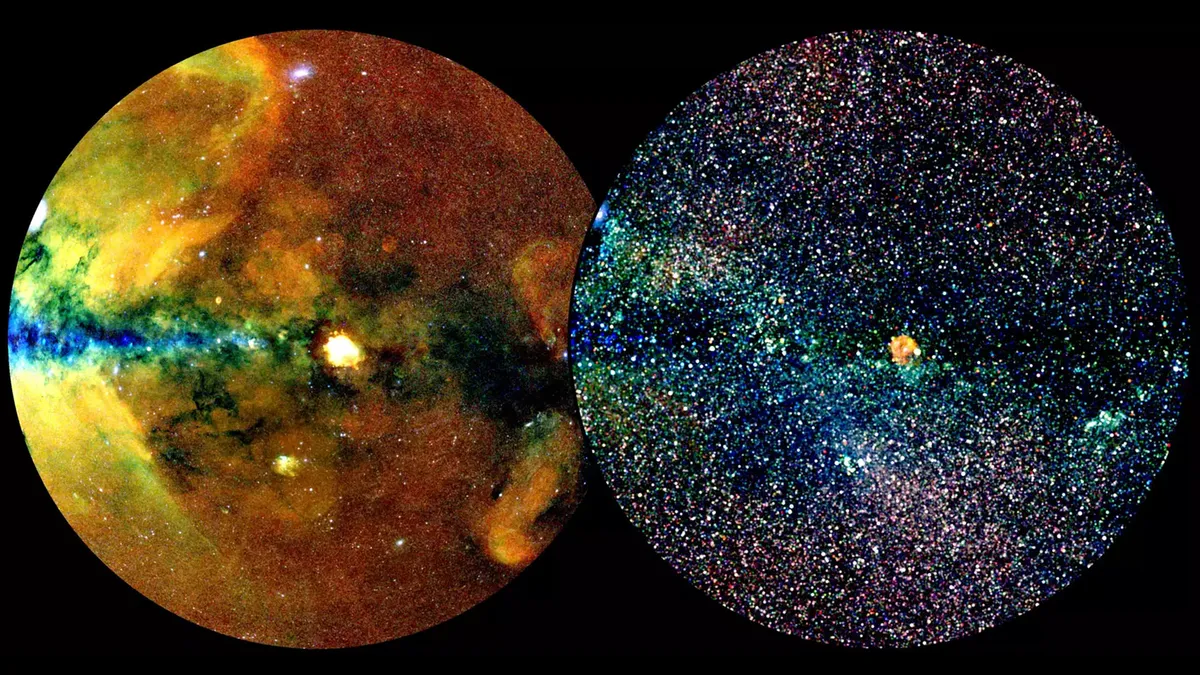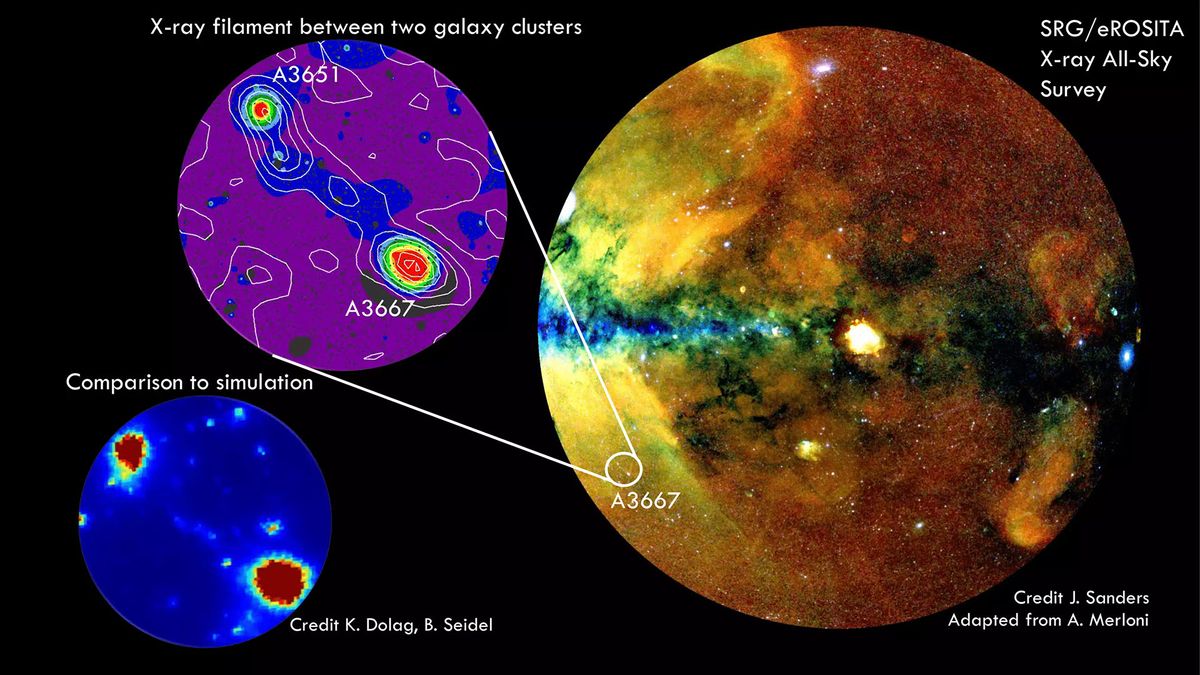Key takeaways:
- Astronomers have created the largest and most detailed X-ray map of the universe, revealing over 700,000 supermassive black holes and other deep-space objects.
- The eROSITA All-Sky Survey, conducted from December 2019 to June 2020, detected around 900,000 cosmic objects and recorded 170 million X-ray photons in just 6 months.
- One of the most exciting discoveries is a 42-million-light-year gas bridge, a possible part of the cosmic web that connects galaxy clusters and highlights dark matter’s presence.
- X-rays in space come from powerful, high-energy sources like galaxy clusters, supernova remnants, and active black holes, helping astronomers study the universe’s structure.
- Researchers have already submitted over 50 new papers from eROSITA’s findings, adding to the 200+ previously published, marking a huge leap in X-ray astronomy.
_________________
The eROSITA survey detected more than 170 million X-ray photons in just 6 months.

Astronomers have created the largest and most detailed X-ray map of the universe, revealing more than 900,000 deep-space objects. This map was produced using data from the eROSITA All-Sky Survey, an ambitious mission that scanned the sky between December 2019 and June 2020, detecting more than 170 million X-ray photons. These findings, including over 700,000 supermassive black holes, galaxy clusters, and other exotic objects, mark a significant leap forward in X-ray astronomy.
The eROSITA Mission
The eROSITA X-ray telescope, managed by the Max Planck Society, aimed to capture a complete X-ray survey of the sky. Over six months, the survey gathered an unprecedented amount of data, identifying nearly 900,000 distinct celestial objects. This figure exceeds the number of sources detected by NASA’s Chandra and the European Space Agency’s XMM-Newton X-ray telescopes over the past 25 years combined.
X-rays, a form of high-energy radiation invisible to human eyes, typically come from extremely hot gases surrounding objects like galaxy clusters, supernova remnants, and black holes. These cosmic X-rays offer a deeper understanding of the universe’s most energetic phenomena, such as the violent processes surrounding black holes, where fast-moving matter creates intense X-ray emissions.

One of the standout discoveries from eROSITA is an enormous “filament” of hot gas stretching more than 42 million light-years between two galaxy clusters. This filament likely represents part of the “cosmic web” — a network of gas that feeds galaxies and outlines the universe’s structure, possibly indicating regions where dark matter resides. This research, though still awaiting peer review, could provide valuable insights into the makeup of the universe.
Groundbreaking Discoveries and Future Research
In addition to this new X-ray map, researchers have submitted more than 50 papers based on the survey’s findings, adding to over 200 previously published studies on eROSITA’s discoveries. According to Andrea Merloni, the principal investigator for the project, the sheer volume of data from eROSITA is “mind-blowing,” with more sources detected in just six months than earlier missions achieved in decades.
This X-ray survey has not only expanded our knowledge of supermassive black holes and galaxy clusters but also opened up new areas of study. By revealing the large-scale structure of the universe and its most extreme objects, the eROSITA map represents a significant step forward in our exploration of deep space.

The eROSITA All-Sky Survey has created the most detailed X-ray map of the universe to date, uncovering nearly 900,000 objects, including distant black holes and galaxy clusters. This incredible achievement helps astronomers better understand the universe’s structure and the energetic processes occurring in deep space, paving the way for future research.





I have been following your blog for a while now and have to say I am always impressed by the quality and depth of your content Keep it up!